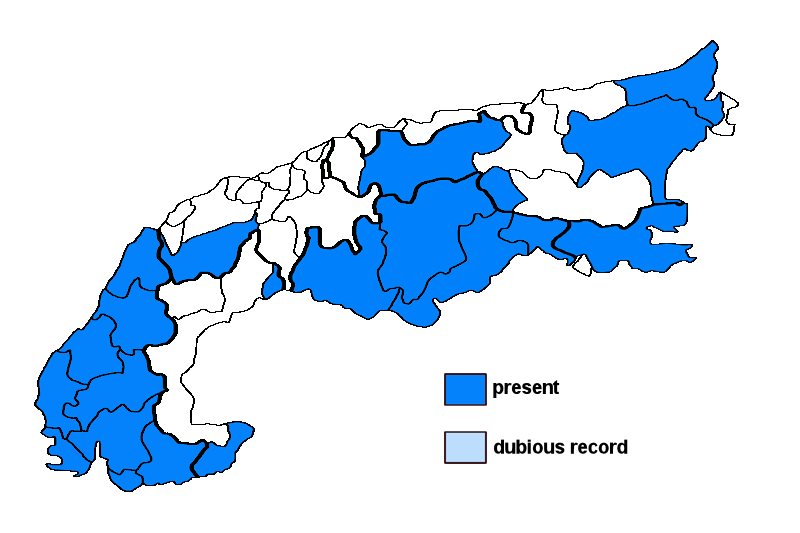Lobothallia controversa Cl. Roux & A. Nordin
Syn.: Aspicilia calcarea (L.) Mudd var. farinosa auct. non (Flörke) Hazsl., Aspicilia farinosa auct. non (Flörke) Arnold, Lecanora farinosa (auct. non Flörke) Nyl., Pachyospora calcarea A. Massal. var. farinosa auct. non (Flörke) A. Massal., Pachyospora farinosa auct. non (Flörke) A. Massal., Urceolaria calcarea auct. non (L.) Ach. var. farinosa Flörke
Lichenised.
Substrate: calciferous rocks
Altitudinal range: from the submediterranean/colline belt (potential vegetation: mixed deciduous forests dominated by Quercus and Carpinus) to the alpine belt (potential vegetation: treeless Alpine grasslands and tundras, to the lower limit of perennial snow and the equilibrium line of glaciers)
Note: a mainly southern species in Europe, found on hard rocks (pure limestone or dolomite), with optimum in the submediterranean and montane belts. The nomenclature has a complicated history, because Flörke used the epithet ""farinosa"" for A. calcarea: some old records from the Alps could refer to that species.
Austria: Tirol; Steiermark; Niederösterreich (incl. Wien); Switzerland: Valais; France: Alpes-de-Haute-Provence; Haute-Alpes; Alpes-Maritimes; Drôme; Isère; Savoie; Haute-Savoie; Vaucluse; Var; Italy: Friuli; Veneto; Trentino Alto Adige; Lombardia; Liguria; Slovenia: Alpine and Pre-Alpine Slovenia;





